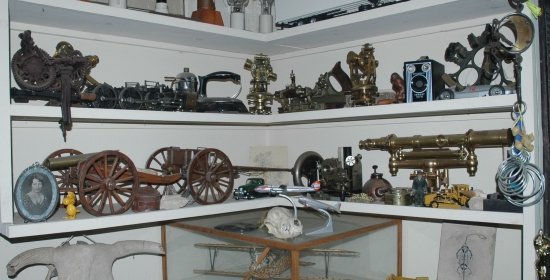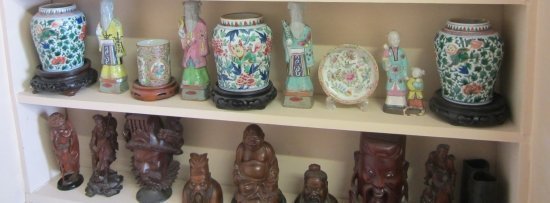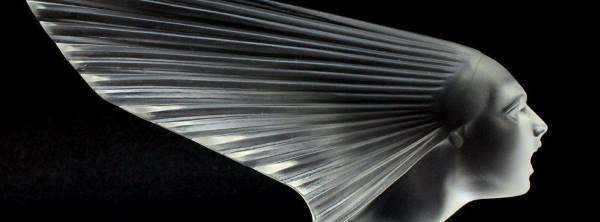In these days of acute focus on the origins and design sources of most aspects of the applied arts – now emulating that applied long since to the fine arts – it comes as some surprise that there remain subjects little explored. One of these is glass lighting. Chandeliers, candelabra, candlesticks and wall brackets have been little researched. The reason is simple: they developed from articles of necessity rather than as embellishments of the domestic interior. It is thus quite difficult to find examples to which a date and maker can be securely attributed.
Among the first chandeliers, all of glass, those with a cut body and plain, uncut arms (a rare group indeed), only one has any sort of date attached to it. The chandelier in the chapel of Emanuel College, Cambridge was given in 1732. But this is as far as we get. Was it made in that year or merely passed to the College by its owner on his moving house? And who made it?
There is a great deal known about the ordering of the extensive series of chandeliers which formerly enhanced Lord Burlington’s splendid Assembly Rooms at York. Fittings of ‘crinkled’ (diamond-moulded) glass were ordered, and a central chandelier, the gift of the Earl, was ‘most curiously carved’. But the makers’ names never appear. The nearest we get is the possibility that Mr Watson ‘the glass man in London’ to whom an approach was made, might be Robert Watson, a member of the Glass Sellers’ Company the City Livery Company set up in 1644 to establish and control trade in all glass other than window glass. He was Master in 1734 and had a glass shop in the Strand. Did he make chandeliers? We don’t know.
It is not until the advent of William Parker that we find any concrete link between artefact and maker. Parker plunged into the limelight with his tender for chandeliers for the new Assembly Rooms at Bath in 1771. Prudently (or not) the Furnishing Committee accepted tenders from two makers and Parker was commissioned for the set of three lustres for the Tea Room, providentially signing the receiver bowl of one of them. Jonathan Collet, who had taken over the extensive business of the celebrated London glass manufacturer Thomas Betts after his death in 1765, provided a set of five chandeliers for the Ballroom, the central one being larger than the others. However, arms began to fall from the Ballroom chandeliers. The Committee took fright, instructed their immediate dismantling and requested Parker (still, apparently, in Bath) to replace them.
So we have at last some certainty of attribution, Parker having supplied all of the Assembly Room’s chandeliers, save one. This one was the large central Collet chandelier originally planned for the Ballroom which the Committee eventually agreed to buy from its maker once he had made it ‘safe and sound as a satisfaction to the public’. It was placed in the great octagonal Card Room. All these chandeliers remain in the Rooms although both they and the buildings are much restored. Through his work in Bath – to which city, at the end of the eighteenth century, everyone of note and title repaired during the season for a spell of the waters, the vapours and, more importantly, gossip – Parker came to the fore in his field. In no time he was involved at Carlton House for the Prince Regent and his route was open to the nobility.
Our next secure attribution is the pair of chandeliers which we note from later correspondence with Parker were supplied to Sir Roger Newdegate for the Dining Room at Arbury Hall, Nuneaton, in 1788. These are neoclassical chandeliers of ‘classic’ layout. The stem is centred by a classical vase, there are canopies at top and bottom and two tiers of arms, the upper carrying slender spires or prisms, the lower candles. The top terminates in a pineapple. The design comes towards the end of a period of steady refinement and there is no doubt it is one of the peaks in chandelier design in terms of visual satisfaction and suitability of purpose.
Figure 1 shows a similar, though smaller, chandelier entirely typical of Parker’s more domestic output at this time. All the parts are finished to a high degree and the glitter of the glass is enhanced by the gold-plating of the brass structural elements. This much-travelled chandelier has been in Copenhagen, Tel Aviv and Cape Town. At present it is home. Parker and Perry (a partnership dating from 1803) provided a further, larger chandelier for Sir Roger on completion of his gothicising the Saloon at Arbury in 1805. At his request this was also of ‘classic’ layout despite the design being by then old-fashioned. The makers, however, insisted that its arms should be ‘cut plain as they succeeded those cut with hollows upon them, look lighter and are more generally approved of’. All three of these chandeliers remain at Arbury in agreeably unrestored state, curiously at home, despite their classical detail, amid the froth of the most elaborate ‘Gothick’ interiors in England.
Having established that there are at least some documented examples of his work from which correct attribution of others may be deduced, it then follows that close study of the component parts of Parker’s chandeliers is called for in pursuing attribution of undocumented examples. Thus, for example, he patented a type of base or plinth for candelabra in 1781. This is taken to refer to candelabra bases such as that illustrated in figure 2, but does it? Fortunately a drawing, sent with candelabra of this type to France to assist in assembly, exists in the Metropolitan Museum of Art, New York. This illustrates in outline this precise design of base. ‘A pair of elegant patent Gerandoles’ were supplied to the Duke of Devonshire at Chatsworth, amongst an extensive order, in 1782. There survive at Chatsworth in fact a set of four uniquely elaborate candelabra on Parker patent bases of gilded green glass. It is possible that these are four of six on Parker’s bill where they were charged at 252 pounds, a considerable figure. The pair whose bases were specified as ‘patent’ cost only 28 pounds 7s, and were therefore likely to be as simple as the pair illustrated here (fig. 2). The ‘patent’ bases are not seen after the 1780s; thus all arms fitted to candelabra mounted on these bases will be ‘cut with hollows upon them’.
Although we have dealt with virtually only one maker of lustres (albeit the principal one for at least fifty years spanning the beginning of the nineteenth century) it will be seen that already a small vocabulary of identifiable design features and methods of construction is beginning to build. More features and techniques that are attributable to Parker – and later to Parker and Perry – can be seen in works dating from around 1795-1810. Both the little chandelier and the elegant candelabrum illustrated (figs 3, 4) have the plain, six-sided glass arms recommended to Sir Roger Newdegate; but it will be seen that they are of idiosyncratic shape with a tight top bend and sweeping lower curve. The little chandelier also illustrates variety in the elimination of a top glass canopy in favour of an arrangement of ormolu fronds in graded sizes. This feature appears regularly on candelabra of the family, though the candelabrum illustrated retains its traditional canopy.
A splendid pair of three-light wall brackets at the Winterthur Museum, Delaware (fig. 5) is top-of-the-class for this particular layout. Together with exceptional metalwork, these brackets show the firm’s almost trademark tubular centrepiece, a glass sleeve over a substantial ormolu rod cut with flutes and horizontal bands of single diamonds. Above this comes the arrangement of gold fronds referred to above. These lights sport storm shades: an indication that they were probably ordered for India. The Winterthur Museum has an exceptional collection of glass lighting fittings. Of the family discussed here, there is a rich chandelier and a set of six, no less, wonderful candelabra on blue glass and ormolu plinths. So it becomes gradually easier to group characteristics of glass lighting fittings and the more one sees and the more retentive ones’ memory, the easier it becomes.
But now and again one needs some firm return to base, some document on which one can hang a few suppositions and convert them to facts. In this field there are all too few. We have seen how the Arbury chandeliers were attributed through the survival of correspondence. Another, though more tenuous guide appeared a few years ago in a sketchbook. There arrived at the Victoria and Albert Museum in recent years an archive of one John Wateridge. Wateridge was designer of lighting fittings for Perry and Co., successors to Parker and Perry, from 1903 to 1925. The firm had been in continuous and very active production right though the nineteenth century and the workshops were full of bits and pieces, including partly-assembled fittings. In Wateridge’s book are sketches of these things, most of which have previously been at least tentatively attributed to the firm. Here we see candelabra with the curious form of arm used in several of the present illustrations. It is no more than an irritation to find one candelabrum in the sketchbook transparently designed by the opposition in about 1830, the opposition in this case being John Blades of Ludgate Hill who made magnificent things during the first half of the nineteenth century. They rose to great heights with retail premises even in Bombay, only to fall away, perhaps through lethargy in designs. The enterprise established by William Parker, however, continued in various successful partnerships until eventual liquidation in 1935.




